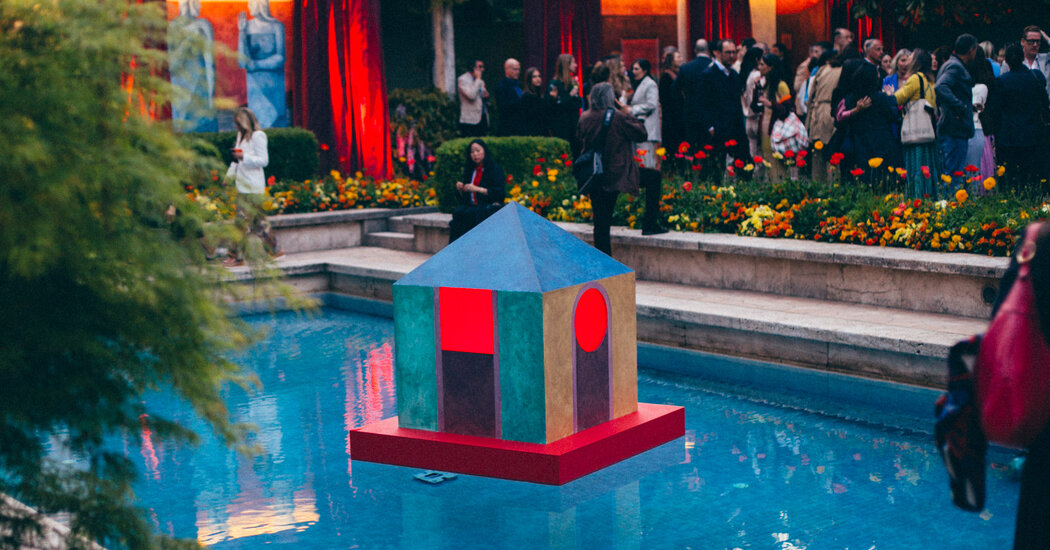On Monday evening in Milan, T Magazine hosted its annual party to toast the start of the Salone del Mobile design fair. As usual, guests gathered on the grounds of Villa Necchi Campiglio, the rationalist 1935 home designed by the Italian architect Piero Portaluppi, but this year the property appeared more sprawling than ever. Arranged between the garden’s purple wisteria-covered trellises and beds of sunset-colored poppies were 10-foot-tall paintings on canvas by the Spanish artist Elvira Solana. Interspersed with curtains of maroon moiré Dedar fabric, they depicted, in dusty jewel tones, scenes from an imaginary home — a cornflower blue staircase leading around a corner, a yellow door ajar — suggesting that perhaps another estate existed just out of reach. Finished with the same dappled, frescolike effect was a miniature house that floated in the home’s pool.
The evening’s hosts, T’s editor in chief, Hanya Yanagihara, and design director, Tom Delavan, chatted with guests — who enjoyed Hugo spritzes and arancini — on the villa’s front steps, while others explored the building’s interior, taking in its Picasso sketches and marble bathrooms. In the home’s dining room, Solana had set up miniature wooden models of the works she’d made for the occasion. In addition to the large panels and floating dwelling, her installation included a low-to-the-ground bridge — made to look like a row of columns receding into the distance on one side and a colorful city street on the other — and a set of standing screens where guests, including the architect India Mahdavi, the artistic director Barnaba Fornasetti and the artist Faye Toogood, posed for photos. The latter scene, arranged near the gates of the estate, also comprised two more small houses, these accented in pink and purple and light enough to be picked up. The creative director Ramdane Touhami was quick to lift one over his head.
Solana, 37, typically transforms walls that already exist. To her own apartment in Santoña, Spain, a seaside town near Bilbao, she has added trompe l’oeil paintings that create the illusion of built-in shelves, a curved colonnade overlooking the ocean and a half-open closet. But as she put it, “at Villa Necchi, we couldn’t change the original architecture, because it’s a masterpiece.” And so this was both the artist’s first outdoor commission and one of the first that required her to build her own surfaces — a project for which her formal…
Click Here to Read the Full Original Article at NYT > Travel…
